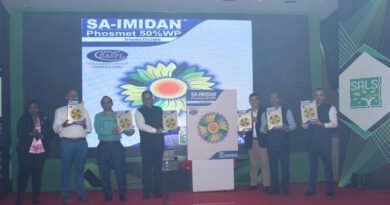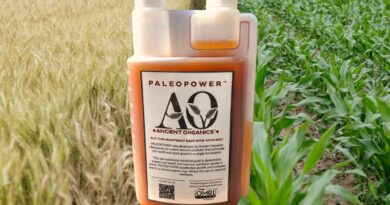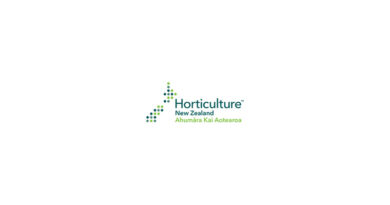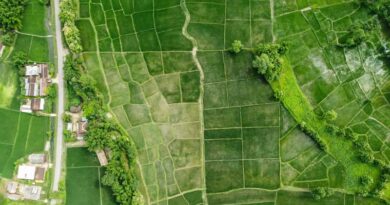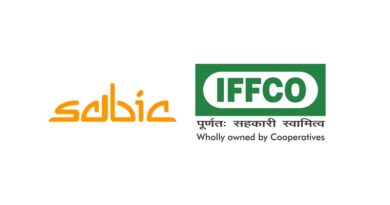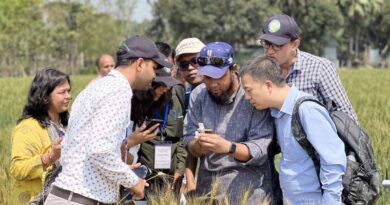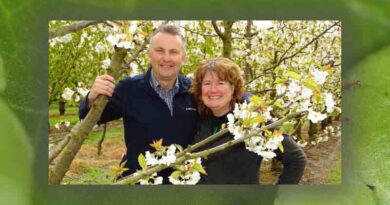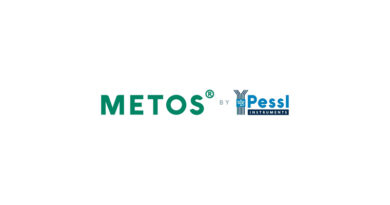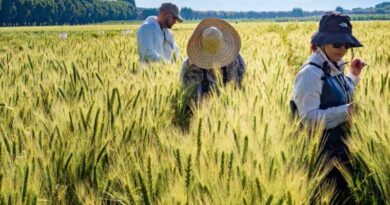Apiculture weds Sustainable Agriculture: Tapping the unrealized potential and creating a win-win situation
Guest Author: Avik Ray, Center for Studies in Ethnobiology, Biodiversity, and Sustainability (CEiBa), West Bengal, India
06 May 2023, New Delhi: The global apiculture market is calculated to experience a compound annual growth rate (CAGR) of 4.3% during the period 2020–25. In India, apiculture is a multi-million dollar industry whose market size is likely to reach a value of Rs 33,128 million by 2024 and expand at a CAGR of nearly 12% by 2024.
India is the eighth largest honey-producing country and stands ninth in export (Press Information Bureau 2022). The recorded export of natural honey reached 59,536.75 MT for INR 633.82 crore in 2019–20 (Sethi 2021). Inside the country, honey consumption has witnessed strong growth over the last few decades though per capita consumption of honey is still low in India compared to several developed countries. Thus, apiculture is a pillar of the Indian economy contributing 17.1% of GDP (Ministry of Information 2010). It supports millions of bee farmers in the country of which the majority is small, marginal, and migratory. They produce a range of honey from seasonal or perennial crops, placing their boxes in plantations, orchards, agricultural fields, and near-forested patches. Apart from honey, a number of other by-products are also associated with Apiculture, e.g., beeswax, propolis, royal jelly, honeycomb, etc.
While the beekeeping industry continues to grow and generate livelihood, its more prominent and complementary role in agri-horticulture is neither well-appreciated nor is the potential entirely tapped. As a result, it does not find a place in policies that could be mutually accelerating for both industries and create a win-win situation. Especially, when the duo can be integrated and work hand in hand to benefit each other mutually. It becomes even more crucial in recent times when global pollinator decline is a grave concern that has been impacting our agricultural or horticultural production endangering our food and nutrition security (Potts et al. 2010). Perhaps with climate precarity looming large, the flowering phenology would change, and so will be a change in nectar volume, and other physiological characteristics (Numata et al. 2022). Hence, it might snowball, affect the honey industry, and imperil the livelihood of millions of bee farmers. In light of this socio-ecological crisis, I would strive to propose and delineate a sustainable path for two interdependent sectors, agri-horticulture, and apiculture, to mend this apparent distant relationship so both can mutually benefit from the interaction.
How Integration of bee fauna can create a win-win situation in sustainable agriculture?
Pollination followed by fruit formation is an essential step in the life cycle of plants. Pollination service by animals, especially insects, birds, mammals, and other organisms is well known. In terms of economy, globally the annual contribution of pollinators to agricultural crops has been estimated at about 153 billion Euros, which represents nearly one-tenth of the total economic value of agricultural production used directly for human food (Gallai et al. 2009). Of a large number of crop plants, importantly, a major percentage has been foraged and pollinated by insects; honeybees or solitary bees are forerunners in their contribution.
Many crops are rich in nectar or serve as pollen sources or can be a potent provider of both. So, bees have a central role in natural as well as anthropogenic ecosystems. Barring cereal crops from the Poaceae family like rice, wheat, barley, maize, etc, a vast diversity of crops is pollinated by bees, e.g., oilseed plants (niger, rape seed, mustard, sesame, sunflower), spices and condiments (black cumin, coriander, cardamom, fennel, cumin or jeera), fenugreek, thymol or ajwain), fruits (citrus varieties, apple, cashew, jamun, guava, litchi, cherry, strawberry, grapes, cucumbers, squashes, melons, peach, gooseberry, etc), vegetables (cabbage, radish, carrot, turnip, cauliflower, tomato, brinjal, capsicum, a number of cucurbitaceous crops), legumes (broad beans, dwarf beans, Cajanus, etc), and plantation crops (Pongamia, Eucalyptus, Acacia), medicinal plants (Rauvolfia serpentina, Ocimum, etc) and many more (Moringa, etc). However, the level of dependence on pollinators and subsequent fruit formation is variable across crop plants. A few members are obligately pollinated by pollinators whereas others are facultative.
Whatever the case, the ecological role played by bees, i.e., in fruit formation and its enhancement, bears serious repercussions on the socio-economy of human society, since it is closely linked to ensuring food and nutrition security. So, the loss or absence of bees implies a chain of phenomena leading to ecological catastrophe when we strive to perceive its contribution in terms of our food production; since the loss of pollinating agents is bound to affect the productivity of crops (Bartomeus et al. 2014).
Hence, pollination service by honeybees has been a widely researched topic for its critical role in agriculture. Not only raising agricultural production, but studies also demonstrate bees enhance the fruit setting and quality (uniformity in size and shape, better size, mass, etc) (Bartomeus et al. 2014; Geslin et al. 2017). Additionally, bee pollination aids to improve the shelf life, and commercial value of crops (Klatt et al. 2014). Realizing its potential, many European countries have moved forward to integrate honey bees into agriculture by formally keeping bee colonies or boxes. The promotion of integrated farming by the Government of India (GoI) is also an encouraging movement in this direction.
In a mission to advance the sweet revolution, the GoI has allocated five hundred crores for National Beekeeping & Honey Mission (NBHM) for three years (2020-21 to 2022-23) keeping human involvement in breeding, rearing, and managing of bees as an agro-based activity in the spotlight. The objective is to include small farmers as a part of the Integrated Farming System (IFS) since it requires very little land and also to multiply farmers’ income through sustainable ways. Because beekeeping has a central role in the pollination of a multitude of crops, its integration with agricultural fields functions to increase the income of the farming households and the beekeepers by increasing crop yield on one hand and providing honey and other high-value beehive products on the other. It has also been increasingly appreciated that bees could perform as a less-expensive alternative for input in promoting sustainable agriculture and simultaneously enhancing crop productivity. In a nutshell, it should create a win-win situation for both sectors and offer ways to sustainably intensify the production of most pollinator-dependent crops. It can also assume a crucial role in geographic regions that have witnessed a decline in pollinator visitation in recent times and hence a fall in agricultural productivity.
Ground Realities: Progress
Earlier, honeybees were only synonymous with the production of honey and other beehive products. The immense potential of honey bees to complement and intensify agricultural production has not been realized until the past three or four decades. Now, the perception towards the potential of bees and their utility in pollinating a plethora of agricultural and horticultural crops to increase their yield or enhance the quality of fruits has radically changed in many developed countries (Breeze et al. 2014). Consequently, many commercial beekeepers nowadays prefer to provide honeybee colonies on rent for pollination services rather than honey production.
Worldwide, honeybee stocks have been estimated to have risen at a rate that is slower than the growth in planted areas of insect-pollinated crops (Aizen et al. 2012). Also, the value added by pollination services is an important component of agricultural GDP in many nations including the USA and Russia (Lautenbach et al. 2012).
Though the ball is rolling at a much slower speed in India, the culture of renting bee colonies for the successful formation of selected high-value crops, e.g., apples is gathering pace. For example, honeybees have been employed for apple pollination in Himachal Pradesh in the Northwest Indian Himalayan region since 1996. Pertinently, a study in Himachal Pradesh reported about a 20-30% increase in apple production as a result of the integration of honeybees colonies. Additionally, it has also improved fruit quality, e.g., an increase in well-formed fruits, a reduction in odd-shaped fruits, and a better color. This has opened up new income opportunities for both small-scale Apis cerana as well as commercial Apis mellifera beekeepers. Thus, the demand for bee colonies is on the rise in selected geography. Other pilot studies in progress demonstrate positive outcomes when integrated bee colonies were employed. For example, horticultural crops such as guava show better fruit sets, and improved fruit quality whereas litchi and banana show a yield enhancement due to bee pollination (Joshi et al. 2021; Rajagopal et al. 2005). Studies also reported that pollination by bees has enhanced fruit quality and reduced untimely fruit drops in peach, apple, citrus, and plum trees (Verma and Dulta, 1987; Partap 2000). In cumin and coriander, overall yield enhancement has been observed owing to Apis florea F., A. mellifera, A. cerana, and A. dorsata bees (Meena et al. 2018; Patil and Pastagia 2016). Pastala and Krishnamoorthy (2016) also reported a moderate to high spurt in crop productivity in capsicum, tomato, pigeon pea, chickpea, mustard, niger, papaya, mango, cashew, etc when native bees (Apis cerana, and stingless bees) were integrated into the agricultural field. Mass-scale experiments are underway to gain insights into the effect of bee pollination on various crops. The results of the yield rise are remarkable. Saraswat (2017) mentions a host of cross-fertile crops, self-sterile crops with different degrees of self-sterility, and even self-fertile crops that benefited from bee pollination, e.g., oilseeds (mustard, rape seed, safflower, sunflower, etc.), orchard crops (apple, pears, plums, litchi, citrus varieties, grapes, cucumbers, squashes, melons, peach, guava, gooseberry, etc.), legumes (broad beans, dwarf beans, pigeon pea, etc.) and vegetables (cabbage, carrot, onion, cauliflower, gourds, radish, turnip, etc).
The potential rise in increase in yields of various crops varies from a minimum of 5% to several thousand. Scientists even estimate that the value from pollination-derived yield increment is several times morethan the aggregate value of all the hive products. The preliminary results also approximately calculated the number of facilitating boxes or bee colonies indispensable for such positive impacts, but more is yet to be done to optimally attach bee colonies in the field. Hence, if a close symbiotic relationship is fostered, beekeepers earn money for the pollination services and farmers reap the benefits of boosted crop productivity from the pollination services (Partap 1992).
The policy ecosystems:
Applying and reaping the benefits of the pollination service is full of hurdles. The actual integration of bee colonies with the agricultural field and widespread adoption of the culture requires thoroughly reframing the policy ecosystem and creating a conducive space to disseminate the message, emphasize the role of apiculture in agriculture, capacity building, and extension services, on-ground application, and follow-up. Before tapping the benefits, a few imminent barriers have to smoothen for the efficient operation of the program. Importantly, it becomes apparent with the awakening calls by the global crisis stemming from pollinator decline (Potts et al. 2010). The issue has been plaguing India and sporadic alarm bells have been rung but no serious effort has been channelized to gauge the magnitude of this crisis, let alone reimagining the policy measures. On top of it, the detrimental effects of synthetic agrochemicals on pollinators in general and honeybees in specific have been widely researched (Cullen et al. 2019). Studies demonstrate critical behavioral shifts in honeybees in response to pesticide exposure (Tackenberg et al. 2020). Yet, of many pollinators, the generalist Western honeybee (Apis mellifera) visits the greatest variety of crop species and hence very important species for pollination service (Klein et al. 2007); recent studies also underscore the equal or complementary role of diverse wild pollinator communities to managed honeybees (Garibaldi et al. 2013).
Widespread declines in wild pollinator diversity from agricultural intensification, habitat degradation, the spread of diseases, and climate change thus is the primary concern (Lautenbach et al. 2012). Thus, maintaining bee vitality and health, and nurturing adjoining bee-friendly ecosystems poses a key impediment to widespread adoption and carrying it over (Janousek et al. 2023).
1. Thus, the first foundation step is to regulate, reduce, and stop the use of bee-harming chemicals employed in agriculture. A number of pesticides, fungicides, and weedkillers, are available in the market in hundreds of trade names and their unregulated and rampant use has become a norm. Moreover, many of them are subsidized by Government facilitating wider applications (Chetia 2020; The Telegraph Online 2023). Unless the use of harmful chemicals is regulated and stopped, the socio-ecological capacity of bees can not be fully realized, which warrants a clear reframing to foster bee-friendly ecosystems. Recently, the Ministry of Agriculture and Farmers Welfare has banned forty-six pesticides and four pesticide formulations for use, manufacture, or import which is a welcome step, but much deserved to be done (Anon 2023).
2. The next step follows the first, rampant application of herbicides and weedicides in the agroecosystems and elsewhere in anthropogenic landscapes should be prohibited. Herbicides and weedicides used in clearing the waste ground, industrial sites, and railway track non-selectively kill all plants. These are used in small quantities in forestry, pasture systems, urban landscapes, and the management of wildlife habitats. Many of them have turned into a menace, have been harming bees worldwide, and causing mass mortality (Motta et al. 2018). For example, recent research has offered insights into the effects of glyphosate on honeybees’ behaviors, growth and development, metabolic processes, and immune defense (Tan et al 2022).
3. Attempts could be made to converge it with the country-wide activities of natural farming that spearheads more local, resilient, and adaptive agroecology-based farming practices (Niti Aoyog 2021). Natural farming is promoted as Bharatiya Prakritik Krishi Paddhati Programme (BPKP) under the centrally sponsored scheme of Paramparagat Krishi Vikas Yojana (PKVY). The objective of BPKP is to encourage traditional farming practices relying on on-farm biomass recycling and soil health restoration, the use of on-farm cow dung-urine formulations, and soil aeration. It has been gaining momentum in recent years and accepted as an efficient alternative to industrial farming (Duddigan et al. 2023). By theory, it creates a space in which the philosophy of synthetic chemical-free farming and on-ground integration of bee colonies can be amalgamated. The colonies, by their pollination service, would catalyze better fruiting and enhanced yield and hence can steer non-chemical sustainable intensification; the integrated crop-colony systems therefore could reinforce a win-win situation for both beekeepers and farmers in a natural farming framework. One example can be sought here, given India has a huge gap in edible oil production and demand, can the capacity of pollination service in oilseed crops, mustard, sunflower, safflower, niger, sesame, etc be exploited? To what extent? Can we, in the same manner, eye on increasing the production of other crops sustainably with bees in the field under the framework of natural farming?
4. Empowering and engaging women force in apiculture as an additional income-generating means and economically bolstering them to be self-reliant through beekeeping enterprise. Thus, it can be viewed as a large employment opportunity, especially for women. Beekeeping and honey hunting based on indigenous and local knowledge can aid to ensure livelihood security and reduce the poverty level of rural communities, documented in more than fifty countries (Gupta et al. 2014). And whether the inclusion of beekeeping programs in MNREGA activities, though it requires certain training and skill development, can be achieved (Dreze and Nair 2022).
5. Not only Apis mellifera or A. cerana, but various wild bee species, including stingless bees as in many traditional beekeeping practices, must be sustained, conserved, and prompted to manage pollination service. Pollinator-positive or bee-friendly rural, urban, peri-urban, and other anthropogenic ecosystems through the creation and management of landscape heterogeneity, conserving florally diverse space for bee foraging and nectar collection, growing annual or perennial bee flora, etc can be fostered for posterity. Apart from avenue or ornamental trees, the ‘so-called’ weeds or unwanted plants are often replete with nectar and pollen reward but are removed manually or through weedicides or herbicides despite their greater ecological role, however, they are to be conserved and managed as a safer haven for pollinators (Donkersley et al. 2023).
Reference:
– Aizen MA, Garibaldi LM, Cunningham SA, Klein AM (2008) Long-term trends in crop yield and production reveal no current pollination shortage but increasing pollinator dependency. Curr Biol 18: 1–4.
– Anon 2023. Banning of Pesticides. Posted On: 03 FEB 2023 by PIB Delhi. https://pib.gov.in/PressReleaseIframePage.aspx?PRID=1896140#:~:text=Based%20on%20the%20recommendations%20of,or%20use%20in%20the%20country.
– ANI Press Release. 2022. The beginning of ‘Sweet Revolution’ Business Standard 31st Auguts 2022. https://www.business-standard.com/content/press-releases-ani/the-beginning-of-sweet-revolution-122083001120_1.html
– Bartomeus I, Potts SG, Steffan-Dewenter I, Vaissiere BE, Woyciechowski M, Krewenka KM, Tscheulin T, Roberts SP, Szentgyörgyi H, Westphal C, Bommarco R. Contribution of insect pollinators to crop yield and quality varies with agricultural intensification. PeerJ. 2014 Mar 27;2:e328.
– Breeze TD, Vaissière BE, Bommarco R, Petanidou T, Seraphides N, Kozák L, Scheper J, Biesmeijer JC, Kleijn D, Gyldenkærne S, Moretti M. 2014. Agricultural policies exacerbate honeybee pollination service supply-demand mismatches across Europe. PloS one 9(1):e82996.
– Chetia P. 2020. Good News! Government Offering 75 Percent Subsidy on Pests, Diseases and Weeds Control. Krishi Jagran. Updated 18 March, 2020. https://krishijagran.com/agriculture-world/good-news-government-offering-75-percent-subsidy-on-pests-diseases-and-weeds-control/
– Cullen MG, Thompson LJ, Carolan J.C, Stout JC, Stanley DA (2019) Fungicides, herbicides and bees: A systematic review of existing research and methods. PLoS ONE 14(12): e0225743. https://doi.org/10.1371/journal.pone.0225743
– Donkersley P, Witchalls S, Bloom EH, Crowder DW. A little does a lot: Can small-scale planting for pollinators make a difference? Agriculture, Ecosystems & Environment. 2023 Feb 28;343:108254.
– Dreze J and Nair N. 2023. Mango plantation: A reminder of how NREGA can tremendously contribute to rural development. The Economic Times 13th March 2023. https://economictimes.indiatimes.com/opinion/et-commentary/mango-plantation-a-reminder-of-how-nrega-can-tremendously-contribute-to-rural-development/articleshow/98613894.c
– Duddigan S, Shaw LJ, Sizmur T, Gogu D, Hussain Z, Jirra K, Kaliki H, Sanka R, Sohail M, Soma R, Thallam V, Vattikuti H & Collins CD. Natural farming improves crop yield in SE India when compared to conventional or organic systems by enhancing soil quality. – Agronomy for Sustainable Development volume 43: 31
– Kujur A. What is India’s ‘Sweet Revolution’? The aim of the mission is to double farmers’ income. Deccan Herald. Web desk. 31st January 2022. https://www.deccanherald.com/business/union-budget/what-is-indias-sweet-revolution-1076553.html
– Garibaldi LA, Steffan-Dewenter I, Winfree R, Aizen MA, Bommarco R, et al. (2013) Wild pollinators enhance fruit set of crops regardless of honey-bee abundance. Science 339: 1608–1611.
– Geslin B, Aizen MA, Garcia N, Pereira AJ, Vaissière BE, Garibaldi LA. The impact of honey bee colony quality on crop yield and farmers’ profit in apples and pears. Agriculture, ecosystems & environment. 2017 Oct 1;248:153-61.
– Gupta, R. K., Reybroeck, W., van Veen, J. W. & Gupta, A. Beekeeping for Poverty Alleviation and Livelihood Security. Vol. 1: Technological Aspects of Beekeeping (Springer, 2014)
– Janousek WM, Douglas MR, Cannings S, Clément MA, Delphia CM, Everett JG, Hatfield RG, Keinath DA, Koch JB, McCabe LM, Mola JM. 2023. Recent and future declines of a historically widespread pollinator linked to climate, land cover, and pesticides. Proceedings of the National Academy of Sciences 120(5):e2211223120.
– Joshi U, Kothiyal, Kiran, Kumar, Yogesh and Bhatt, Rajendra (2021). Role of honeybees in horticultural crop productivity enhancement. International Journal Agricultural Science 17 (AAEBSSD) : 314-320, DOI:10.15740/HAS/IJAS/17-AAEBSSD/314-320
– Klatt BK, Holzschuh A, Westphal C, Clough Y, Smit I, Pawelzik E, Tscharntke T. 2014 Bee pollination improves crop quality, shelf life and commercial value. Proc. R. Soc. B 281: 20132440. http://dx.doi.org/10.1098/rspb.2013.2440
– Klein AM, Vaissie`re BE, Cane JH, Steffan-Dewenter I, Cunningham SA, et al. (2007) Importance of Pollinators in Changing Landscapes for World Crops. P Roy Soc Lond B Bio 274: 303–313.
– Lautenbach S, Seppelt R, Liebscher J, Dormann CF (2012) Spatial and Temporal Trends of Global Pollination Benefit. PLoS One 7: e35954.
– Meena, N.K.; Lal, G.; Meena, R.S.; Meena, B.M.; Meena, R.D. Pollinator’s diversity and abundance on cumin (Cuminum cyminum L.) and their impact on yield enhancement at semi-arid regions. J. Entomol. Zool. Stud. 2018, 6, 1017–1021.
– Motta EV, Raymann K, Moran NA. Glyphosate perturbs the gut microbiota of honey bees. Proceedings of the National Academy of Sciences. 2018 Oct 9;115(41):10305-10.
– Niti Aoyog. 2021. Natural Farming: NITI Initiative. https://www.niti.gov.in/natural-farming-niti-initiative#:~:text=Natural%20Farming%20is%20a%20chemical,and%20livestock%20with%20functional%20biodiversity. Last accessed 05.05.2023.
– Numata S, Yamaguchi K, Shimizu M, Sakurai G, Morimoto A, Alias N, Noor Azman NZ, Hosaka T, Satake A. 2022. Impacts of climate change on reproductive phenology in tropical rainforests of Southeast Asia. Communications Biology 5(1):311
– Partap U. Honeybees in mountain agriculture. New Delhi: Oxford and IBH. 1992:91-112.
– Partap U. 2000. Foraging behavior of Apis cerana on citrus (Citrus sinensis var. Red Junar) and its impact on fruit production. Pages 174-177 in Asian bees and beekeeping: Progress of research and development, proceedings of the fourth Asian Agricultural – – – Association (AAA) International Conference, 23-28 March 1998, Kathmandu, Nepal (Matsuka M, Verma L R, Wongsiri S, Shrestha K K, and Uma Partap, eds.). New Delhi, India: Oxford and IBH Publishing Co. Pvt. Ltd.
– Patil, P.N.; Pastagia, J.J. Effect of bee pollination on yield of coriander. Coriandrum sativum Linnaeus. Int. J. Plant Prot. 2016, 9, 79–83.
– Pastala V and Krishnamoorthy S. 2016. Honey Bees – Farmers’ best friends. LEISA India Magazine. https://leisaindia.org/honey-bees-farmers-best-friends/
– Press Information Bureau (2022) APEDA working in collaboration with state governments, farmers and others to boost honey exports. Posted On: 05 JAN 2022.
– Potts SG, Biesmeijer JC, Kremen C, Neumann P, Schweiger O, Kunin WE. Global pollinator declines: trends, impacts and drivers. Trends in Ecology & Evolution. 2010; 25(6): 345–53.
– Rajagopal D, Eswarappa G, Raju AJS. Pollination Potentiality of Honeybees in Increasing Productivity of Guava in Karnataka. In Changing Trends in Pollen Spore Research; Today and Tomorrow’s Printers & Publishers: New Delhi, India, 2005; pp. 131–141.
– Saraswat BL. 2017. Beekeeping: Vital Input for Sustainable Agriculture. Press Information Bureau Government of India Special Service and Features. 23-January-2017.
– Sethi T. 2021. A Honeyed Shot in the arm for Aatmanirbhar Bharat. 06-Sept-2021. NITI Ayog. https://www.niti.gov.in/honeyed-shot-arm-aatmanirbhar-bharat
– Tackenberg MC, Giannoni-Guzmán MA, Sanchez-Perez E, Doll CA, Agosto-Rivera JL, Broadie K, Moore D, McMahon DG. Neonicotinoids disrupt circadian rhythms and sleep in honey bees. Scientific reports. 2020 Oct 21;10(1):17929.
– Tan S, Li G, Liu Z, Wang H, Guo X, Xu B. Effects of glyphosate exposure on honeybees. Environmental toxicology and pharmacology. 2022 Feb 1;90:103792.
– Thakur RK, Yadav S. Apiculture: A sustainable livelihood option and a mean for increased crop productivity. Beneficial Insect Farming-Benefits and Livelihood Generation. 2016;1.
– The Telegraph Online (2023) Budget 2023: Food, fertiliser, subsidy down 28%. Published 02.02.23, https://www.telegraphindia.com/business/budget-2023-food-fertiliser-subsidy-down-28/cid/1913660
Also Read: Verdesian Life Sciences awarded the Global Leadership Award at BioAg India 2023
(For Latest Agriculture News & Updates, follow Krishak Jagat on Google News)


